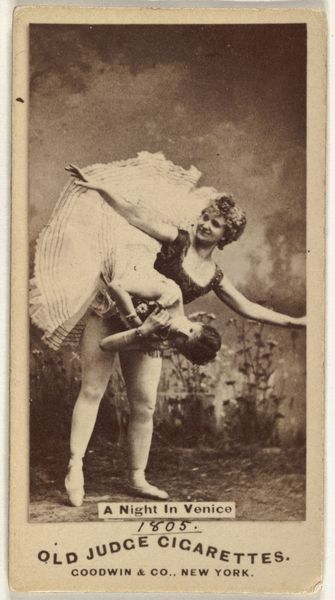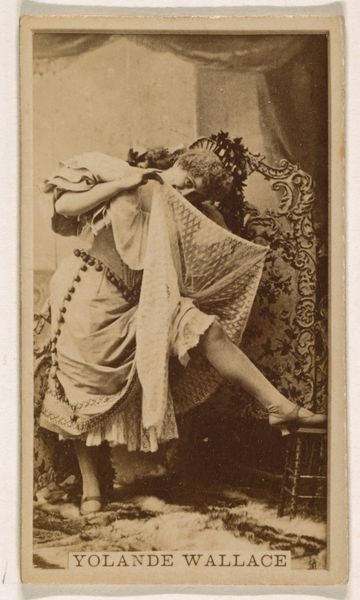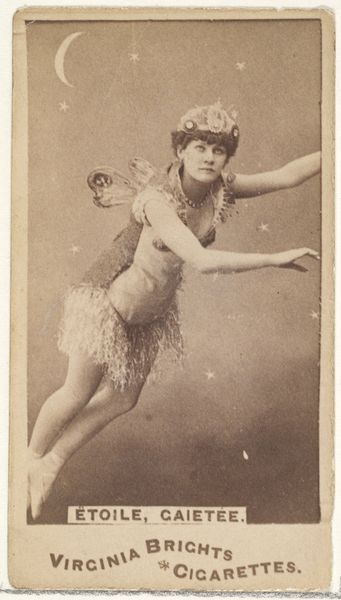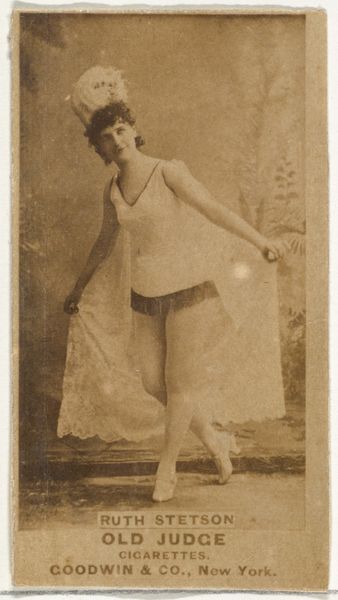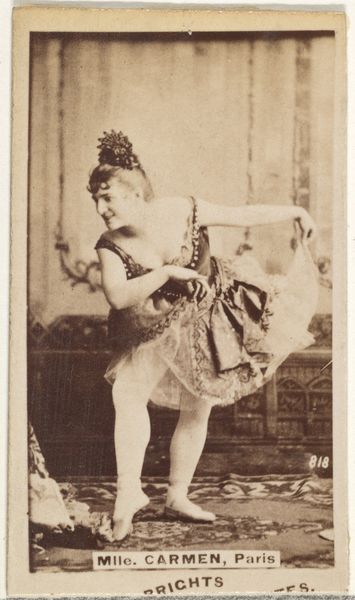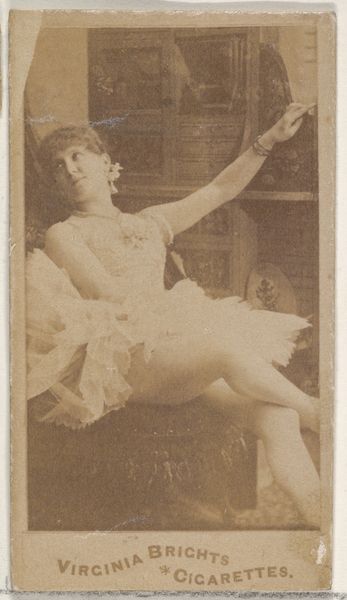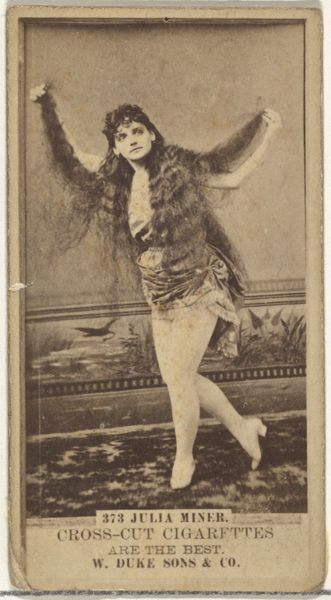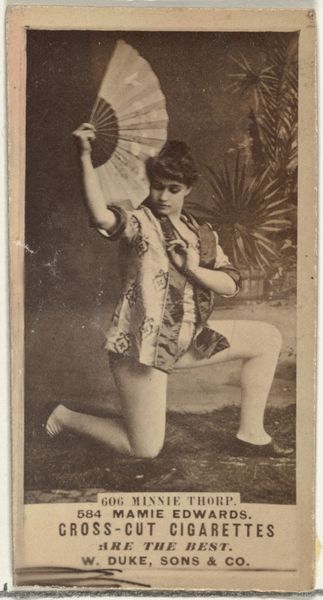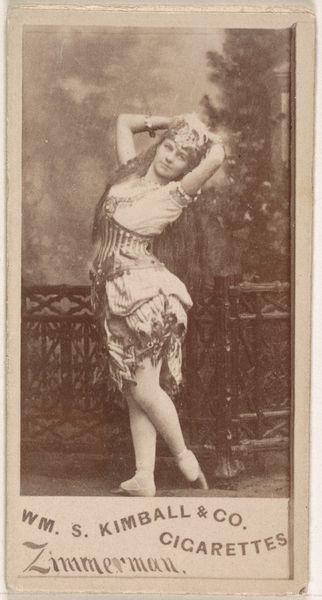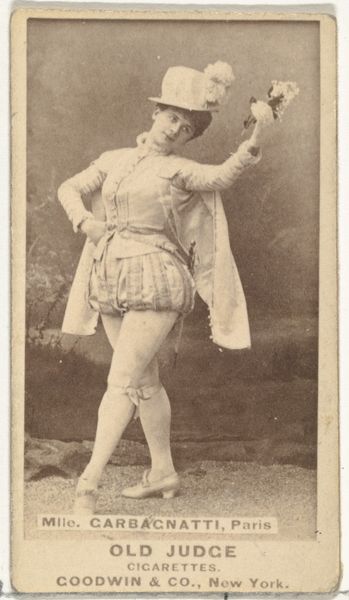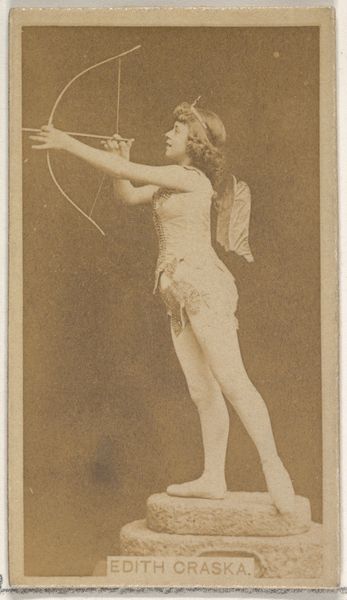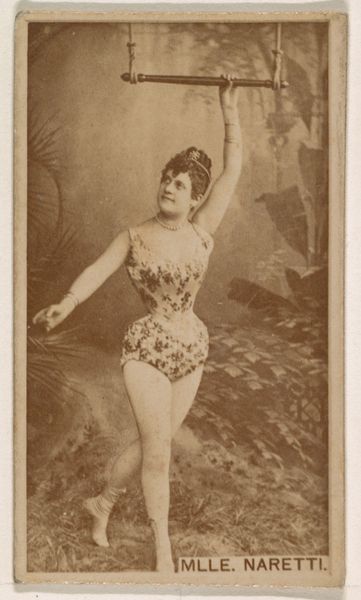
Miss Mury, from the Actresses series (N245) issued by Kinney Brothers to promote Sweet Caporal Cigarettes 1890
0:00
0:00
print, photography
#
portrait
#
pictorialism
# print
#
figuration
#
photography
#
genre-painting
Dimensions: Sheet: 2 1/2 × 1 7/16 in. (6.4 × 3.7 cm)
Copyright: Public Domain
Curator: Take a moment to consider "Miss Mury," a photographic print from around 1890, part of the Actresses series issued by Kinney Brothers. The Met houses this example. Editor: There's a lovely, almost hazy, softness to the image. The muted tones evoke a feeling of romantic longing or perhaps just the theatrics of the stage. Curator: Precisely. These cards served as advertisements for Sweet Caporal Cigarettes. Consider the convergence: mass production, image reproduction, and the burgeoning celebrity culture focused on actresses like Miss Mury. Editor: I am intrigued by how they stage the action. Notice the arrangement of forms—the diagonal lines created by the dancers' bodies, the framing effect of the ornate bench. It is not only a balletic pose. Curator: The means of production matter! Cheaply made, widely distributed, these cards were literally consumed, either collected or tossed away with the cigarette packaging. Their ephemeral nature highlights the constructed nature of fame and the disposability of images within a market economy. Editor: And yet, this fleeting image aims at classical beauty and the fleeting perfection of ballet! Her poised gesture, the airy tutu. It's an interplay of contrasts—light and shadow, movement and stillness, ephemerality, and an implied, albeit perhaps affected, timelessness. Curator: The context is vital. The Kinney Brothers aimed at popular appeal, turning fine art techniques into marketing ploys. It questions what’s "high" and "low" art through consumerism. The card isn't just about aesthetics; it embodies economic strategies and labor conditions. Editor: I see the way those formal choices reinforce themes of lightness and beauty. The hazy focus softens the edges of her costume. The choice of such a composition invites interpretation of meaning and a dialogue with ideals of feminine virtue. Curator: Considering its commercial function and availability reveals fascinating insights regarding 19th-century values around labor, leisure, and consumerism. Editor: It prompts a deeper observation of this artwork’s elements and an opportunity to examine its artistic values beyond context alone.
Comments
No comments
Be the first to comment and join the conversation on the ultimate creative platform.
